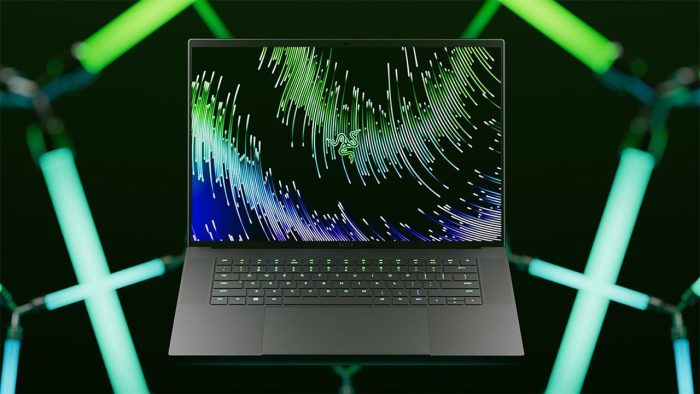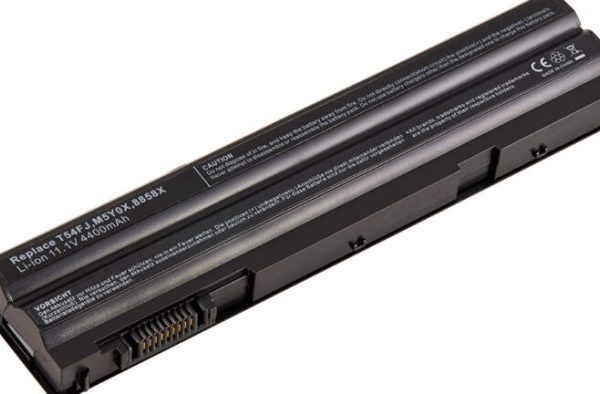Are you in the market for a new laptop and wondering if it’s worth investing in a dedicated graphics card? Or perhaps you’re curious about the capabilities of your current laptop’s graphics performance. The answer to whether all laptops have graphics cards is not as straightforward as you may think. While most laptops come equipped with some form of graphics processing, not all laptops have dedicated graphics cards. So, before you make a decision on your next purchase or start troubleshooting your current laptop’s graphics performance, let’s dive into the details of what exactly a graphics card is and whether or not your laptop has one. Get ready to explore the exciting world of laptop graphics!
Integrated vs Dedicated Graphics Cards
When it comes to graphics cards in laptops, there are two types to consider: integrated and dedicated. Integrated graphics cards are built into the CPU and use a portion of the system’s memory to perform their tasks. In contrast, dedicated graphics cards have their own separate memory and processing power, making them more powerful than integrated ones. Let’s look at each of them in detail
Integrated graphics cards
Integrated graphics cards, also known as integrated GPUs (iGPUs), are built-in graphics processing units found in modern laptops and desktop computers. They are a cost-effective solution that comes bundled with the CPU, and they don’t require a separate graphics card.
While iGPUs may not offer the same level of performance as dedicated graphics cards, they are perfectly capable of handling everyday tasks such as browsing the web, streaming videos, and even playing some light games.
Here are some benefits of using an iGPU:
- Cost-effective: Since iGPUs come bundled with the CPU, they are a more affordable option compared to purchasing a separate graphics card.
- Low power consumption: Integrated graphics cards typically consume less power compared to dedicated graphics cards, which is important for laptops that rely on battery power.
- Space-saving: An iGPU eliminates the need for an additional graphics card, saving space in your computer case or laptop.
Of course, the performance of iGPUs varies depending on the specific model and brand. To give you an idea, here are some G3D Mark scores of popular iGPUs:
- Intel UHD Graphics 630
- AMD Radeon RX Vega 8
G3D Mark Scores of iGPUs
Table 1: G3D Mark Scores for Intel Integrated Graphics
| Graphics | G3D Mark Score |
|---|---|
| Intel UHD Graphics 630 | 1284 |
| Intel Iris Xe Graphics G7 | 3022 |
| Intel Iris Xe Graphics G4 | 1556 |
| Intel Iris Xe Graphics G1 | 937 |
| Intel UHD Graphics 750 | 1760 |
Table 2: G3D Mark Scores for AMD Integrated Graphics
| Graphics | G3D Mark Score |
|---|---|
| AMD Radeon RX Vega 11 | 1596 |
| AMD Radeon RX Vega 8 | 1253 |
| AMD Radeon R7 | 551 |
| AMD Radeon R5 | 381 |
| AMD Radeon R4 | 240 |
Sources:
Dedicated graphics cards

Dedicated graphics cards, on the other hand, have their own memory and processor and are designed specifically for graphics-intensive tasks. They are more expensive, consume more power, and generate more heat, but offer significantly better performance than integrated graphics cards.
The decision between integrated and dedicated graphics cards largely depends on the intended use of the laptop. If the laptop is primarily used for basic tasks such as web browsing and word processing, integrated graphics cards will suffice. However, if the laptop is intended for more demanding tasks such as gaming or video editing, a dedicated graphics card is essential for smooth and efficient performance.
Types of Graphics Cards in Laptops
Entry-level graphics cards are the most basic graphics cards found in laptops, suitable for casual use like web browsing and streaming videos. These cards are not capable of handling high-end gaming or graphics-intensive tasks.
Entry-level graphics cards Examples:
- Intel UHD Graphics 620
- AMD Radeon 520
- NVIDIA GeForce MX130
- NVIDIA GeForce MX150
- AMD Radeon Vega 3
Mid-range graphics cards are more powerful than entry-level graphics cards, designed for gaming and running graphics-intensive software. They offer better performance and speed than entry-level graphics cards.
Mid-range graphics cards examples:
- NVIDIA GeForce GTX 1650
- NVIDIA GeForce GTX 1660 Ti
- AMD Radeon RX 5500M
- AMD Radeon RX 560X
High-end graphics cards are the most powerful graphics cards found in laptops, designed for gaming enthusiasts, video editors, and graphic designers. They provide the best performance and speed, enabling users to run the most demanding games and software.
High-end graphics cards:
- NVIDIA GeForce RTX 2060
- NVIDIA GeForce RTX 3070
- NVIDIA GeForce RTX 3080
- AMD Radeon RX 6700M
- AMD Radeon RX 6800M
- NVIDIA Quadro T500
When choosing a laptop, it’s important to consider the type of graphics card that best suits your needs. Entry-level graphics cards are suitable for basic use, while mid-range and high-end graphics cards are ideal for more demanding tasks. It’s important to note that the performance of a graphics card can vary depending on the laptop’s other components, such as the CPU and amount of RAM.

G3D Mark Scores of Dedicated graphics cards
| Graphics Card | G3D Mark Score |
|---|---|
| Nvidia GeForce RTX 3080 | 33249 |
| Nvidia GeForce RTX 3070 | 26503 |
| Nvidia GeForce GTX 1660 Ti | 9124 |
| AMD Radeon RX 6800 XT | 28103 |
| AMD Radeon RX 6700 XT | 15738 |
| AMD Radeon RX 5500 XT | 6546 |
Source: PassMark Software.
Importance of Graphics Cards for Different Uses
A graphics card is a crucial component in a laptop that determines its ability to display high-quality visuals and images. The importance of graphics cards varies depending on the specific use of the laptop. Here are some examples:
Graphics cards for gaming laptops
Gaming laptops require powerful graphics cards to render high-quality graphics and provide a seamless gaming experience. Entry-level gaming laptops usually come with dedicated graphics cards with 2-4GB of VRAM. Mid-range gaming laptops usually have dedicated graphics cards with 4-6GB of VRAM, while high-end gaming laptops have dedicated graphics cards with 8GB or more of VRAM.
Examples of gaming laptop graphics cards:
- Entry-level: NVIDIA GTX 1650, AMD Radeon RX 5500M
- Mid-range: NVIDIA GTX 1660 Ti, AMD Radeon RX 5600M
- High-end: NVIDIA RTX 3080, AMD Radeon RX 6800M
Graphics cards for video editing laptops
Video editing requires a powerful graphics card to render and edit high-resolution video footage. Mid-range and high-end laptops usually come with dedicated graphics cards with 4-8GB of VRAM.
Examples of video editing laptop graphics cards:
- Entry-level: NVIDIA MX450, AMD Radeon Pro 5300M
- Mid-range: NVIDIA GTX 1660 Ti, AMD Radeon Pro 5600M
- High-end: NVIDIA RTX 3070, AMD Radeon Pro 6800M
Graphics cards for business laptops
Business laptops may not require as powerful graphics cards as gaming or video editing laptops, but they still need to be able to handle everyday graphical tasks. Most business laptops come with integrated graphics cards that are capable of running business software, displaying presentations, and handling web browsing.
Examples of business laptop graphics cards:
- Entry-level: Intel UHD Graphics
- Mid-range: Intel Iris Xe Graphics
- High-end: NVIDIA Quadro T500
Upgrading Graphics Cards in Laptops
While upgrading graphics cards in desktops is relatively easy, upgrading graphics cards in laptops can be much more difficult due to the limited space and custom designs of most laptops. In general, it is not possible to upgrade the graphics card in a laptop in the same way that you can upgrade other components like RAM or storage. However, there are some exceptions to this.
Some high-end gaming laptops and mobile workstations do offer the ability to upgrade their graphics cards, but this is still relatively rare. Additionally, even if a laptop does have a replaceable graphics card, finding a compatible replacement can be difficult and expensive. It’s often much easier and more cost-effective to simply purchase a new laptop with the desired graphics card already installed.
One other option for upgrading graphics performance in laptops is to use an external graphics card (eGPU) through a Thunderbolt 3 port. This can provide a significant boost in graphics performance, but it requires purchasing an eGPU enclosure and a compatible graphics card, which can also be expensive.
Conclusion
Graphics cards play a crucial role in laptop performance, especially for gaming, video editing, and other graphics-intensive tasks. Integrated graphics cards are suitable for basic tasks, while dedicated graphics cards provide a significant boost in performance. Entry-level graphics cards offer decent performance for casual gaming and video editing, mid-range graphics cards offer better performance for more demanding tasks, and high-end graphics cards provide top-of-the-line performance for the most demanding applications. While upgrading graphics cards in laptops is not always possible, it can provide a significant performance boost for those who can do it. In any case, understanding the importance of graphics cards can help you make informed decisions when purchasing a laptop for your specific needs.
FAQs on “Do Laptops Have Graphics Cards?”
Do all laptops come with graphics cards?
Yes, all laptops come with some form of graphics card. It can be integrated into the CPU or a dedicated graphics card.
Can I upgrade the graphics card on my laptop?
It depends on the laptop model. Most laptops have their graphics card integrated into the motherboard and cannot be upgraded. However, some high-end gaming laptops have removable graphics cards that can be upgraded.
Are dedicated graphics cards better than integrated graphics cards?
Yes, dedicated graphics cards are generally more powerful than integrated graphics cards. They have their own dedicated memory and processing power, making them ideal for tasks such as gaming and video editing.
What are some examples of entry-level graphics cards?
Examples of entry-level graphics cards include the Nvidia MX250, Intel Iris Xe, and AMD Radeon 530.
What are some examples of high-end graphics cards?
Examples of high-end graphics cards include the Nvidia RTX 3080, AMD Radeon RX 6800 XT, and Nvidia Titan RTX.
Can I use my laptop without a graphics card?
Yes, you can use your laptop without a graphics card. However, this will limit the performance of the laptop, especially for tasks that require graphical processing power such as gaming or video editing.
How can I tell if my laptop has a dedicated graphics card?
You can check the specifications of your laptop online or in the user manual to see if it has a dedicated graphics card. You can also check the Device Manager in Windows to see if a separate graphics card is listed under Display Adapters.



![Is Buying Laptop From Amazon Safe? [All you need to know]](https://mobizilla.pk/wp-content/uploads/2023/10/13-600x396.jpg)

